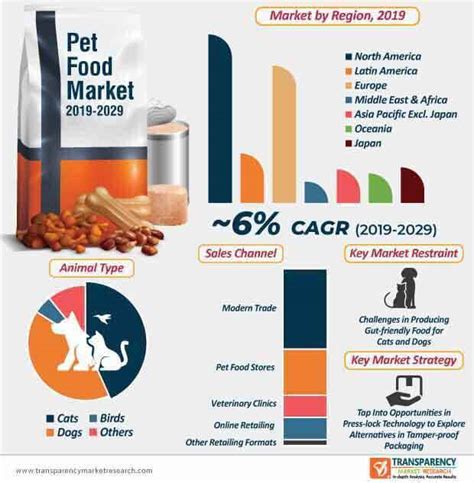Pet owners are increasingly invested in the health and well-being of their furry companions. Consequently, the demand for high-quality pet food products that meet specific dietary needs is growing. In this article, we explore the latest research and studies on pet food to understand emerging trends and provide data-driven insights for pet food manufacturers.

The Changing Pet Food Landscape
The pet food industry is undergoing significant transformation driven by consumer demand for:
According to Euromonitor International, the global pet food market is projected to reach $150 billion by 2025. This growth is attributed to the increasing number of pet owners, rising disposable income, and growing awareness of pet nutrition.
Research and Studies Shaping the Industry
1. The Impact of Ingredients on Pet Health:
Research has demonstrated the correlation between ingredient quality and pet health outcomes. A study published in the Journal of the American Veterinary Medical Association found that dogs fed a diet with high-quality protein had improved immune function and reduced inflammation.
2. The Role of Diet in Disease Management:
Pet food research has explored the potential of specialized diets in managing specific health conditions, such as allergies, kidney disease, and obesity. For example, a study published in Veterinary Medicine and Science International showed that a diet with restricted protein and phosphorus improved kidney function in cats with chronic kidney disease.
3. The Importance of Transparency and Labeling:
Consumers demand transparency in pet food labeling to make informed choices. A survey conducted by the American Pet Products Association found that 90% of pet owners read pet food labels to ensure the presence of specific ingredients and avoid harmful ones.
4. The Rise of Sustainable Pet Food:
Sustainability concerns are becoming increasingly important for pet owners. A study by the University of California, Davis, found that 70% of consumers are willing to pay more for pet food products that are environmentally friendly.
Emerging Trends and Future Directions
1. Personalized Pet Food:
The pet food industry is moving towards personalized nutrition to meet the specific needs of each pet. This requires a deeper understanding of pet genetics, microbiome, and lifestyle.
2. Artificial Intelligence in Pet Food:
Artificial intelligence (AI) technologies are being leveraged to analyze vast amounts of pet food data and identify patterns that can improve product development and recommendations.
3. Advanced Manufacturing Techniques:
3D printing and other advanced manufacturing techniques offer innovative approaches to create novel pet food products with tailored nutritional profiles.
Tips and Tricks for Pet Food Manufacturers
1. Invest in Research and Development:
Continuously invest in research and development to stay at the forefront of pet food science and meet evolving market demands.
2. Focus on Quality and Transparency:
Use high-quality ingredients and ensure transparency in labeling to build trust with consumers.
3. Embrace Sustainability:
Incorporate sustainable practices throughout the pet food supply chain to appeal to environmentally conscious consumers.
4. Utilize Technology:
Leverage AI and data analytics to improve product development, personalization, and consumer engagement.
Conclusion
Pet food research and studies provide valuable insights into the evolving preferences and needs of pet owners. By understanding these trends, manufacturers can develop and market premium pet food products that meet the demands of the market in 2025 and beyond. By focusing on nutrition, transparency, sustainability, and innovation, pet food manufacturers can drive growth and build lasting relationships with pet owners.
Table 1: Global Pet Food Market Size and Forecast
| Year | Market Size (USD Billion) |
|---|---|
| 2022 | 120 |
| 2023 | 130 |
| 2024 | 140 |
| 2025 | 150 |
Table 2: Consumer Preferences for Pet Food Ingredients
| Ingredient | Percentage of Consumers Preferring |
|---|---|
| High-quality protein | 90% |
| Limited or no grains | 70% |
| Omega-3 fatty acids | 60% |
| Probiotics | 50% |
| Antioxidants | 40% |
Table 3: Pet Food Trends by Region
| Region | Key Trends |
|---|---|
| North America | Personalized pet food, advanced manufacturing |
| Europe | Sustainable pet food, transparency and labeling |
| Asia-Pacific | Functional pet food, pet food e-commerce |
| South America | Premium pet food, specialized diets |
Table 4: Emerging Technologies in Pet Food Development
| Technology | Application |
|---|---|
| Artificial intelligence | Personalized nutrition, product recommendations |
| 3D printing | Novel product formats, tailored nutritional profiles |
| Blockchain | Supply chain traceability, transparency |
| Nanotechnology | Enhanced nutrient delivery, targeted health benefits |





















